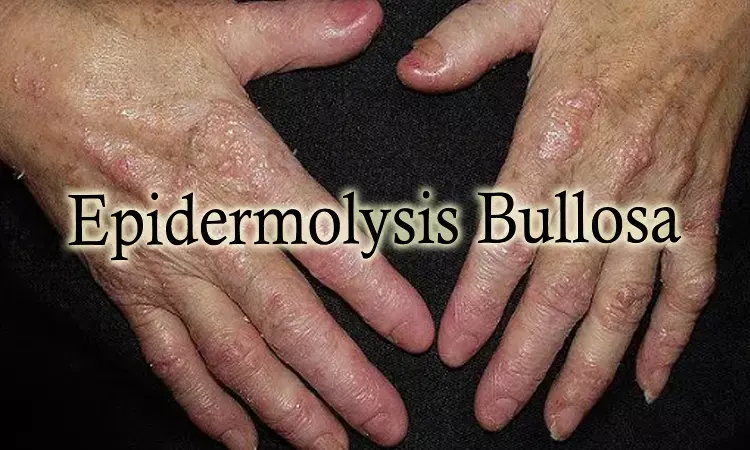- Home
- Medical news & Guidelines
- Anesthesiology
- Cardiology and CTVS
- Critical Care
- Dentistry
- Dermatology
- Diabetes and Endocrinology
- ENT
- Gastroenterology
- Medicine
- Nephrology
- Neurology
- Obstretics-Gynaecology
- Oncology
- Ophthalmology
- Orthopaedics
- Pediatrics-Neonatology
- Psychiatry
- Pulmonology
- Radiology
- Surgery
- Urology
- Laboratory Medicine
- Diet
- Nursing
- Paramedical
- Physiotherapy
- Health news
- Fact Check
- Bone Health Fact Check
- Brain Health Fact Check
- Cancer Related Fact Check
- Child Care Fact Check
- Dental and oral health fact check
- Diabetes and metabolic health fact check
- Diet and Nutrition Fact Check
- Eye and ENT Care Fact Check
- Fitness fact check
- Gut health fact check
- Heart health fact check
- Kidney health fact check
- Medical education fact check
- Men's health fact check
- Respiratory fact check
- Skin and hair care fact check
- Vaccine and Immunization fact check
- Women's health fact check
- AYUSH
- State News
- Andaman and Nicobar Islands
- Andhra Pradesh
- Arunachal Pradesh
- Assam
- Bihar
- Chandigarh
- Chattisgarh
- Dadra and Nagar Haveli
- Daman and Diu
- Delhi
- Goa
- Gujarat
- Haryana
- Himachal Pradesh
- Jammu & Kashmir
- Jharkhand
- Karnataka
- Kerala
- Ladakh
- Lakshadweep
- Madhya Pradesh
- Maharashtra
- Manipur
- Meghalaya
- Mizoram
- Nagaland
- Odisha
- Puducherry
- Punjab
- Rajasthan
- Sikkim
- Tamil Nadu
- Telangana
- Tripura
- Uttar Pradesh
- Uttrakhand
- West Bengal
- Medical Education
- Industry
Junctional epidermolysis bullosa treatment linked with Kidney-Urinary Tract symptoms: JAMA

Recent study by Laura Trefzer and team suggested that physicians and patients with moderate junctional epidermolysis bullosa (JEB) should be aware of the possibility of kidney–urinary tract (KUT) involvement. The findings of this study were published in the Journal of American Medical Association - Dermatology.
Patients with junctional epidermolysis bullosa experience significant morbidity from kidney-urinary tract symptoms, although the range of disease severity and the clinical course have not been well documented. This study was carried out in order to better understand the KUT symptoms, diagnostic and treatment approaches, genotype-phenotype correlations, and results in a large cohort of patients with intermediate JEB.
In this retrospective, longitudinal case series investigation, 99 individuals (50 male and 49 female) who were treated in a single dermatology department in Freiburg, Germany, who had been diagnosed with JEB based on clinical and genetic findings were evaluated over the course of 18 years (January 1, 2003, to December 31, 2021). From patients' medical records, laboratory, clinical, and molecular genetic characteristics were taken. Clinical traits, natural history, treatment of KUT symptoms, and genotype-phenotype correlations of intermediate JEB were regarded to be the main results.
The key findings of this study were as follows:
1. The prevalence was 15% overall, with no more than 15% of male patients (15 of 50) and 0% of female patients having KUT involvement impacting various levels of the urinary tract.
2. The average age at which KUT symptoms first appeared was 6.9 years.
3. After the diagnosis of KUT involvement, there was a median follow-up of 13 years.
4. At least one missense or splice site genetic variation was present in patients with laminin 332 deficiency or integrin β4 deficit, resulting in remnant expression of laminin 332 or integrin α6β4, accordingly.
5. The level of skin involvement did not correlate with the severity of KUT problems, but rather with the damaged protein.
In conclusion, several recommendations may be made based on the results of this case study. Patients who are at risk should be warned and kept an eye out for KUT symptoms. If required, therapeutic actions to stop subsequent problems should be started. To reduce trauma, exploratory invasive urologic diagnostic testing should be avoided. A multidisciplinary team in a facility with competence in the diagnosis and treatment of epidermolysis bullosa should carry out invasive diagnostic or therapeutic procedures, and techniques, equipment, and materials should be customized for each patient. It is best to establish each patient's follow-up visit's time frame specifically. In order to provide broad suggestions, multicenter studies are necessary.
Reference:
Trefzer, L., Schwieger-Briel, A., Nyström, A., Conradt, G., Pohl, M., Miernik, A., & Has, C. (2022). Kidney–Urinary Tract Involvement in Intermediate Junctional Epidermolysis Bullosa. In JAMA Dermatology. American Medical Association (AMA). https://doi.org/10.1001/jamadermatol.2022.2885
Neuroscience Masters graduate
Jacinthlyn Sylvia, a Neuroscience Master's graduate from Chennai has worked extensively in deciphering the neurobiology of cognition and motor control in aging. She also has spread-out exposure to Neurosurgery from her Bachelor’s. She is currently involved in active Neuro-Oncology research. She is an upcoming neuroscientist with a fiery passion for writing. Her news cover at Medical Dialogues feature recent discoveries and updates from the healthcare and biomedical research fields. She can be reached at editorial@medicaldialogues.in
Dr Kamal Kant Kohli-MBBS, DTCD- a chest specialist with more than 30 years of practice and a flair for writing clinical articles, Dr Kamal Kant Kohli joined Medical Dialogues as a Chief Editor of Medical News. Besides writing articles, as an editor, he proofreads and verifies all the medical content published on Medical Dialogues including those coming from journals, studies,medical conferences,guidelines etc. Email: drkohli@medicaldialogues.in. Contact no. 011-43720751


